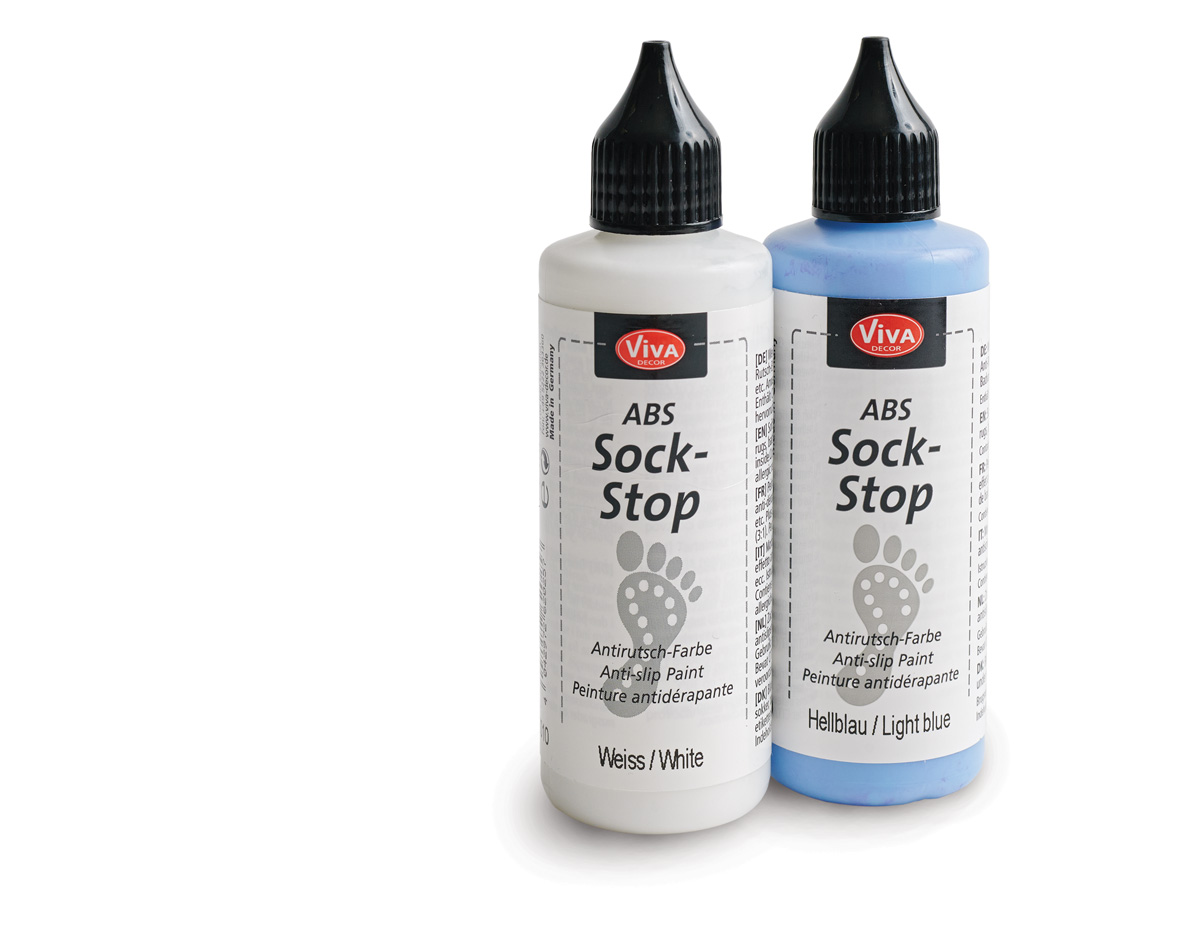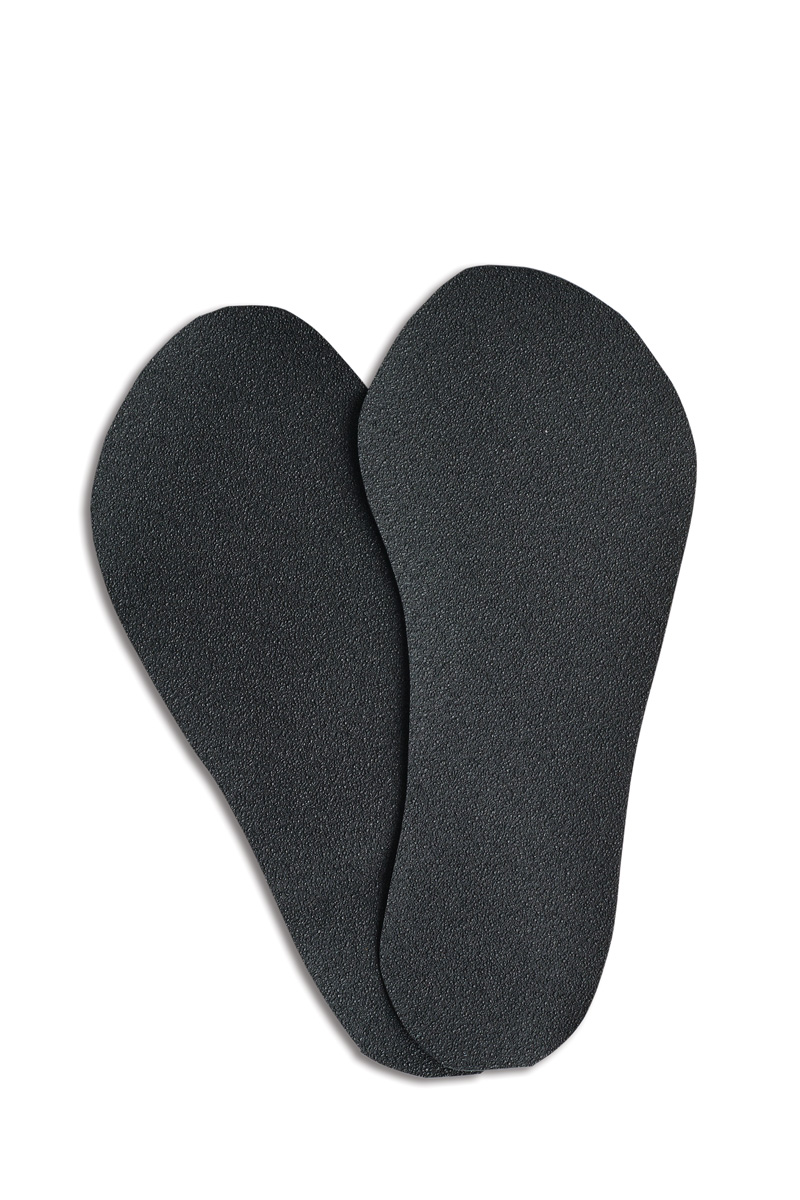Products that Keep Garments from Slipping
Nonskid products help garments get a grip
Slippery floors, clothes that don’t stay put, and other shifty situations can be annoying or even dangerous. Luckily, there is a solution. Let’s take a look at a variety of premade and do-it-yourself options for taming slick surfaces and keeping everything in place.
There are two main types of premade nonskid materials—elastics and fabrics. Both are “grippy” but are used in different ways to solve various slipping problems. And there’s also a product you can use to make your own fabrics and garments less prone to sliding.
Paints
Sometimes you want to reduce slip, but it’s not practical to sew an extra layer of fabric to a garment or home décor item. Fabric paint can come to the rescue. At one time, resourceful creators were using basic puffy-style fabric paint available at craft stores to create a nonskid application. Now there are paints marketed specifically for this purpose. These products are especially handy when you want to maintain some stretch, such as when converting socks to slippers. Long-term wear is usually less than a commercial nonskid cloth, but application is easy, inexpensive, and lots of fun if you get creative with your designs.

Fabrics
Nonskid fabrics are generally made from a medium- to heavyweight textile with a coating applied to the right side. The coating may be in the form of small dots applied in a grid, or an allover layer.

Types
Most craft stores carry a cotton version covered in dots. It is mostly intended for the bottom of slippers, children’s footed pajamas, and similar applications. The benefit of this material lies in the fabric’s soft wrong side. This fabric is appropriate for many household uses and for garments that receive moderate wear. The disadvantage of this fabric is that some versions do not hold up well to active use (as in footie sleepers for toddlers), and the coating may be heat-sensitive.
For heavier use, there are other options available through specialty suppliers. These fabrics are made from 100 percent polyester coated with PVC and are resistant to abrasion. Many are also fire-retardant and cold-resistant. They come in a variety of surfaces ranging from a highly textured “sanded” face, to bumps or even perforated designs. These rugged, nonskid fabrics are recommended for anything requiring a sturdy grip, such as the palms of gloves and oven mitts, heavy-use house shoes, and knee patches for toddlers.
Sewing advice
Sewing with nonskid fabrics can present challenges. Use a jeans or similar sharp needle that can pierce the thick coating. Attach a walking foot or engage the dual feed on your machine, if available, for easiest handling. A nonstick sewing foot or roller foot also can help keep the fabric feeding when stitching a patch or appliqué from this fabric. If the fabric’s coated side is making contact with the sewing surface, you may want to place tear-away stabilizer between the material and the machine’s bed to keep it from sticking.
Elastics
Nonskid elastic trims help keep garments in place. These trims are primarily used in the sportswear and lingerie industries. They grip the skin to keep garments from shifting during wear, without hindering stretch. They have one or more stripes of a rubbery material on the wrong side.
Types
A typical example is the wide “gripper” elastic used inside the hems of athletic gear, where a creeping garment could cause performance issues or abrasions from fabric wrinkles. In shapewear, a similar elastic trim is often applied around the hem to help maintain a smooth line under clothing and prevent stretch fabric from sliding on the body.
Narrower elastics are suitable for bra straps or as waistband facings that keep shirts tucked.
These elastics come in a range of widths and weights, in light and dark neutrals and skin tones, as well as fashion colors. Some have rubber fibers woven into
the elastic. Others feature applied beads of silicone gripping material.
Sewing advice
Applying nonskid elastics is much the same as sewing their uncoated counterparts. A stretch or jersey needle of a size appropriate to the fabric’s weight is the best choice. Generally, you don’t sew through the coated portion of the elastic, so no special treatment is necessary. Sew with a zigzag stitch along the elastic’s edge to attach it, stretching the elastic as needed to match the fabric’s length.
|
|
|
Sources |
| You can purchase antislip products from these online vendors. |
ABS Sock-Stop Paint
FabricsElastic |
Katrina Walker is a designer, teacher, and Pfaff brand ambassador.

































Log in or create an account to post a comment.
Sign up Log in